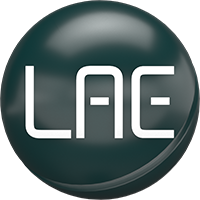This lesson will explain some key concepts to remember when setting Recording levels into your DAW.
Follow these instructions and you’ll get a quality recording that fully captures your voice or instrument, every time.
This method will work in any DAW: Logic Pro, Pro Tools, Reaper etc.
The first key point to take away from this lesson is the balance between Gain and Volume.
And though these often get lumped together they are very different things.
Volume refers to the OUTPUT level of a channel. How loud that one instrument is coming out your speakers.
Gain refers to the INPUT of the amplifier that powers that channel, the pre amplifier. This pre amp controls the tone, loudness, character and saturation of the signal.
There are some key differences between recording onto an analog medium, like tape, and recording into a computer using a DAW.
In the book, Mixing with your Mind, Paul Stavrou has an interesting analogy regarding the difference between Analog and Digital recording, using skyscrapers and focus. (@1:20 in video)
The analogue skyscraper is fuzzy at the bottom, as a result of the analog noise floor, and fuzzy at the top because of tapes saturation/compressor effect that blurs the attack shape of transients.
The optimal analogue recording level is somewhere in the middle, but also favoring that louder is likely better, as it adds a desirable quality to many instruments
The Digital skyscraper is much different. The bottom is blurry because] of a noise a noise floor however it is much lower these days, your average interface is shouldn’t give you any problems here.
The ideal recording level for digital doesn’t really matter much unless we go over 0dBFS
This is the top of the digital scale and to your computer, nothing above here exists and it will get turned into a cut off, rounded out, square wave that just reeks of DIGITAL DISTORTION.
Big rule of thumb with Digital:
Don’t record too loud (Never cross 0dB)
But just to be safe..
The Ideal Digital Recording level to use when setting mic level is: -18dBFS
Aim for this and you will give yourself lots of headroom to avoid any possibility of clipping.
The truth is as long as the audio you record is within that 0dBFS limit it will sound great and react just fine when you go to process it.
A recording with a bunch of squared off peaks, is garbage unless that some sort of effect you’re going for. It best to avoid this because it just sounds awful and isn’t something you wanna work with.
If it’s just a few peaks that clipped, A simple solution would be to:
► Lower your preamp gain level to around -18dB
► Record the passage again, and then
► Comp out those peaks with the new unclipped audio.
This -18dB trick will work for any for signal, because the position you set on the interface is dependent on the source audio, and therefore will always give it the room it needs for a stray peak or an extra energetic performance, you know how drummers like to play much loud AFTER sound check!.
But If that happens mid session, you know what level you’re gonna shoot for.
Aim for -18dB, don’t cross 0dBFS and your recordings will sound great!
In the next lesson, We’ll talk about the differences in recording with a Condenser and Dynamic Microphone.




